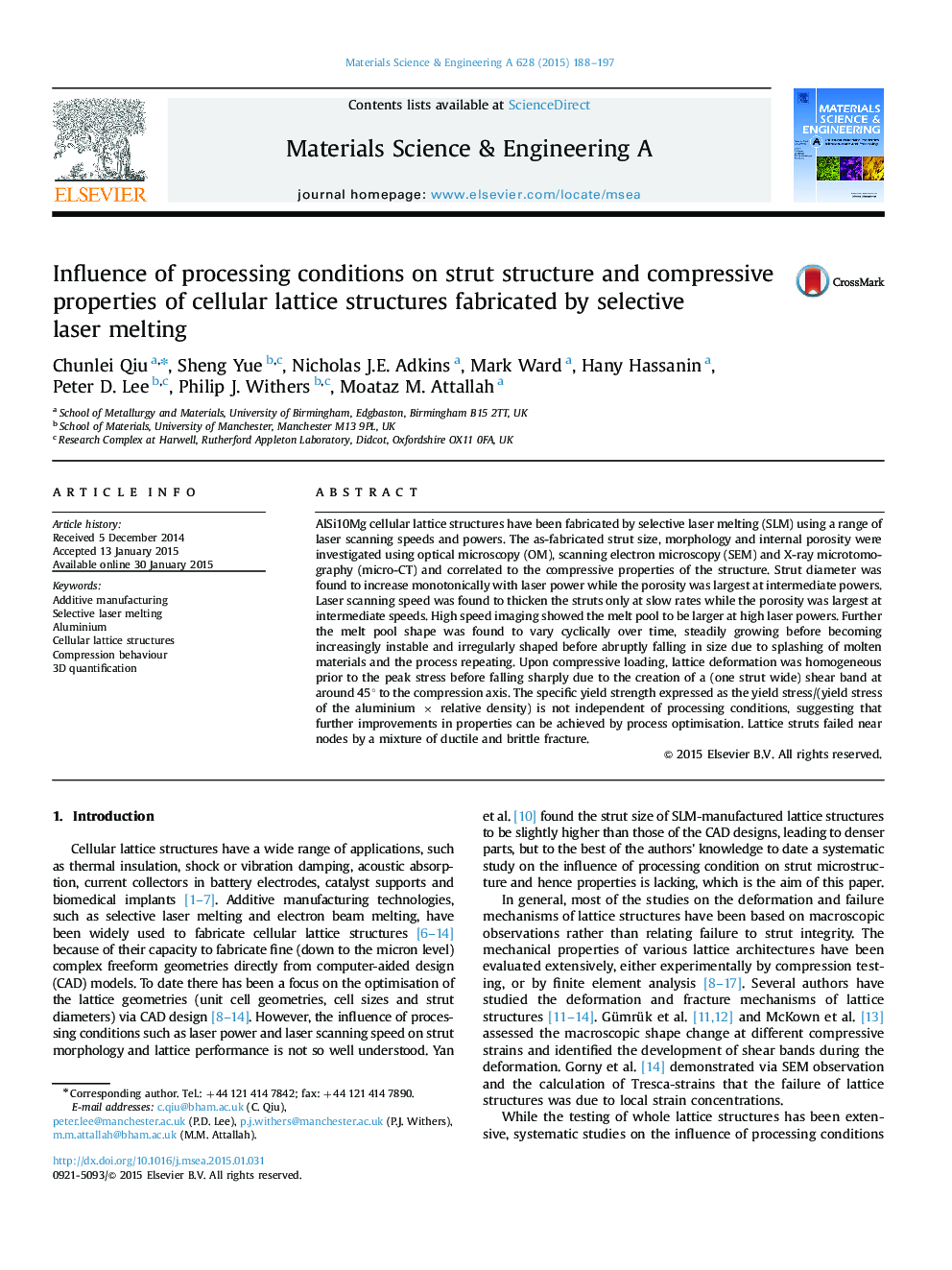| Article ID | Journal | Published Year | Pages | File Type |
|---|---|---|---|---|
| 7978408 | Materials Science and Engineering: A | 2015 | 10 Pages |
Abstract
AlSi10Mg cellular lattice structures have been fabricated by selective laser melting (SLM) using a range of laser scanning speeds and powers. The as-fabricated strut size, morphology and internal porosity were investigated using optical microscopy (OM), scanning electron microscopy (SEM) and X-ray microtomography (micro-CT) and correlated to the compressive properties of the structure. Strut diameter was found to increase monotonically with laser power while the porosity was largest at intermediate powers. Laser scanning speed was found to thicken the struts only at slow rates while the porosity was largest at intermediate speeds. High speed imaging showed the melt pool to be larger at high laser powers. Further the melt pool shape was found to vary cyclically over time, steadily growing before becoming increasingly instable and irregularly shaped before abruptly falling in size due to splashing of molten materials and the process repeating. Upon compressive loading, lattice deformation was homogeneous prior to the peak stress before falling sharply due to the creation of a (one strut wide) shear band at around 45° to the compression axis. The specific yield strength expressed as the yield stress/(yield stress of the aluminium à relative density) is not independent of processing conditions, suggesting that further improvements in properties can be achieved by process optimisation. Lattice struts failed near nodes by a mixture of ductile and brittle fracture.
Keywords
Related Topics
Physical Sciences and Engineering
Materials Science
Materials Science (General)
Authors
Chunlei Qiu, Sheng Yue, Nicholas J.E. Adkins, Mark Ward, Hany Hassanin, Peter D. Lee, Philip J. Withers, Moataz M. Attallah,
